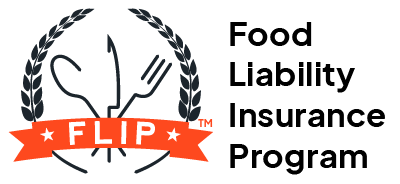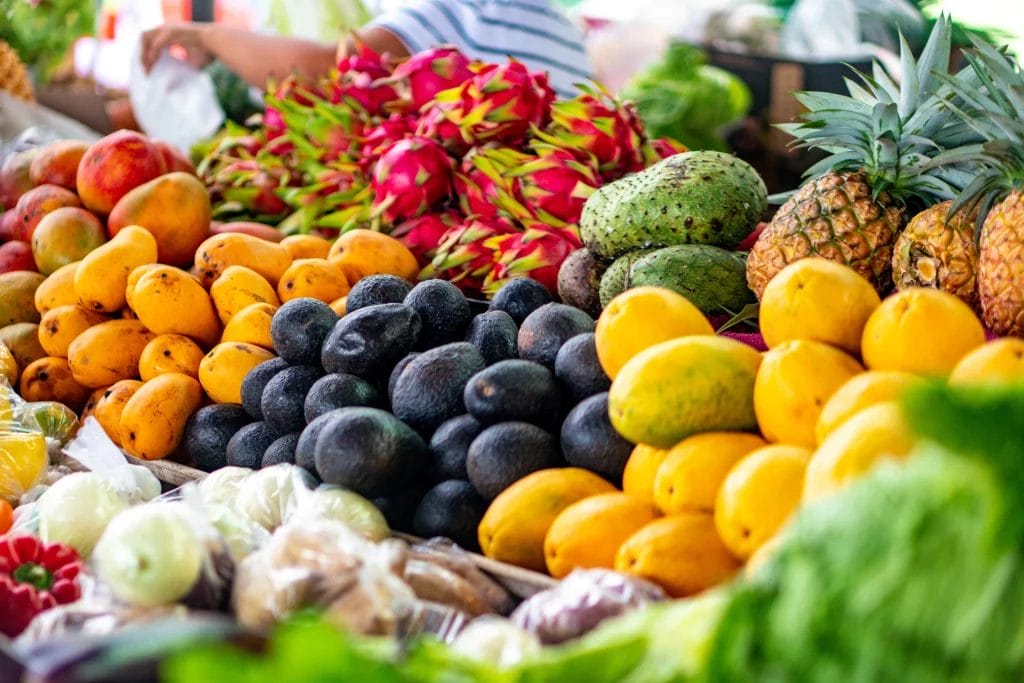Last Updated: February 26, 2025 by Alex Hastings
You know that nagging feeling you get in the pit of your stomach when you just know you’ve forgotten something? One of the last places you want to get that is while you’re setting up at the farmers market.
To prevent this from happening, check out our essential farmers market vendor checklist to keep track of everything and set the stage for success. Then, download our checklist and use it before each market day!
✓ Travel, Setup, and Venue Preparation
Plan to know a few key things about the market venue beforehand:
- Location and parking: Confirm the correct address and know where you’re allowed to park while manning your booth.
- Unloading: Most markets only allow you to unload your vehicle in certain areas. Identify where these are so you know which location is most convenient.
- Shelter: Some markets are held indoors, but outdoor-only markets expose you to the elements. Consider bringing your own tent or canopy for cover.
- Code of conduct: Each market has vendor rules, including setup/teardown policies, refunds, and cancellations.
- Amenities: Check to see what access you’ll have to electricity and water.
- Reviews: Explore what other vendors (and customers) say about the market on Google and Yelp.
Pro Tip: If you can, attend the market yourself before you participate. Get a feel for how many shoppers there are, what items other vendors are selling, and what the overall market culture is. Use this time to think of ways you can set yourself apart from other vendors with special offerings or a unique setup.
✓ Licenses and Permits
Most cities or counties require farmers market vendors to carry specific licenses before selling to customers. These vary depending on where you live, so check with your local government’s health department.
Generally speaking, farmers market vendors may need the following licenses and permits:
- Food handler’s permit
- Grower’s permit (if you grow and sell fresh produce)
- Egg handler’s permit (if you sell fresh eggs)
- Cottage food license (if you sell homemade foods)
- Sales tax permit
- Business license
✓ Farmers Market Insurance
The market is the best place to promote your business face-to-face with current and potential customers. Don’t forget to bring these materials to effectively market yourself:
Most markets require you to provide a Certificate of Insurance (COI) as proof of liability insurance before you can participate. The market usually carries its own liability insurance, but that policy won’t cover expenses you’re deemed responsible for.
Customer injuries, damage to the venue/a neighboring vendor’s property, and equipment theft are some of the most common risks for vendors. These incidents can cost you thousands of dollars in medical, repair, and/or legal expenses, but insurance can save you from paying out of pocket.
For farmers market insurance that meets vendor requirements, check out FLIP’s coverage! Our base policy includes general liability and product liability insurance to protect you from the most common third-party claims vendors face. Plus, 89% of our policyholders pay as little as $26 a month for coverage.
✓ Personal Items
Vending at your local farmers market is an all-day activity, so bring supplies to keep you comfortable while working your booth.
Some farmers market vendor essentials are:
- Weather-appropriate clothing (think layers you can put on and take off throughout the day, especially if you’re vending at a winter market)
- Snacks and beverages (stay hydrated!)
- Sunscreen (in the summertime or at year-round markets if you live in a warmer climate)
- Sunglasses or a hat
- Comfortable shoes
- First Aid kit
- Hand sanitizer
- Insect repellant
- Cell phone charger
- Space heater or portable fan
- Aspirin
- Lip balm
✓ Display Items and Inventory
This might seem like a no-brainer for a farmers market checklist, but it’s easy to leave part of your display at home if you don’t plan carefully.
While every booth is a little different, you need a combination of the following to create an attractive booth that maximizes your market profits:
- Inventory (make sure you’re bringing your best, freshest goods to market!)
- Folding table
- Chair(s)
- Tent or canopy
- Tent weights
- Tablecloth
- Signage (for your business and the inventory you’re selling)
- Baskets, crates, and shelving (for displaying your inventory)
- Props (such as faux plants for decoration)
- Food scale
✓ Sales Counter and Customer Service
Accepting cash and card transactions at your booth often increases your sales at the market. Make sales seamless and efficient by bringing:
- Your point of sale (POS) system
- Card reader
- Cash (small bills and coins)
- Cash apron
- Lockbox
- Receipt book
- Calculator
- Record-keeping book
To take your sales counter to the next level for your customers, make these items available:
- Bags, boxes, and crates
- Wheelbarrows (to borrow when transporting large items/quantities)
- Tissue paper
- Sweets (for kids)
- Treats or a water bowl (for pets)
✓ Cleaning and Safety Supplies
Keeping your booth clutter-free and sanitary is key to mitigating safety risks and minimizing your chances of injuring yourself or others.
- Broom
- Disposable gloves
- Paper towels
- Rags
- Food-safe disinfectant spray
- Garbage bags
- Wet floor signs
✓ Promotional Materials
The market is the best place to promote your business face-to-face with current and potential customers. Don’t forget to bring these materials to effectively market yourself:
- Business cards
- Signs around your booth with your contact information and social media handles
- Free samples of your products
- Recipe cards
Pro Tip: Create a QR code that takes customers to your website when they scan it. Post your code on signboards around your booth!
FAQs About Farmers Market Tips for Vendors
How Do I Find a Farmers Market to Sell At?
- Search for farmers markets in your area online
- Join local farmers market vendor Facebook groups (e.g. Seattle Farmer’s Market Vendors) or to see where other vendors are selling
Find some of the biggest markets in your state in FLIP’s market and festival directory.
What Are Some Top Farmers Market Display Tips?
- Create a sense of abundance by displaying products vertically instead of horizontally
- Label prices with rustic but clear chalkboard signs
- Display your products in woven trays, baskets, and wooden crates
- Arrange your products by color to create a dynamic contrast
Check out more tips for building a better booth from real FLIP policyholders!
How Do I Price My Products for a Farmers Market?
- Calculate your operating costs (ingredients, packaging, labor, etc.)
- Research what similar vendors charge to keep your prices competitive
- Decide on a profit margin
- Factor value into the price (high-quality or specialty items can sell for a higher price)
- Test and adjust your prices over time
For more details, check out our blog post on food pricing strategies!

Alex Hastings
Seattle-based copywriter and (WA) licensed insurance agent Alex Hastings leverages her experience as a lover of fast-casual food, baked goods, and iced oat milk lattes. She holds a B.A. in Creative Writing from Western Washington University. Before working at Veracity, she was a retail copywriter at Zulily and an English language teacher in South Korea. Alex is fully trained on FLIP insurance coverages and writes content that connects food and beverage business owners with the policies they need.
Seattle-based copywriter and (WA) licensed insurance agent Alex Hastings leverages her experience as a lover of fast-casual food, baked goods, and iced oat milk lattes. She holds a B.A. in Creative Writing from Western Washington University. Before working at Veracity, she was a retail copywriter at Zulily and an English language teacher in South Korea. Alex is fully trained on FLIP insurance coverages and writes content that connects food and beverage business owners with the policies they need.

